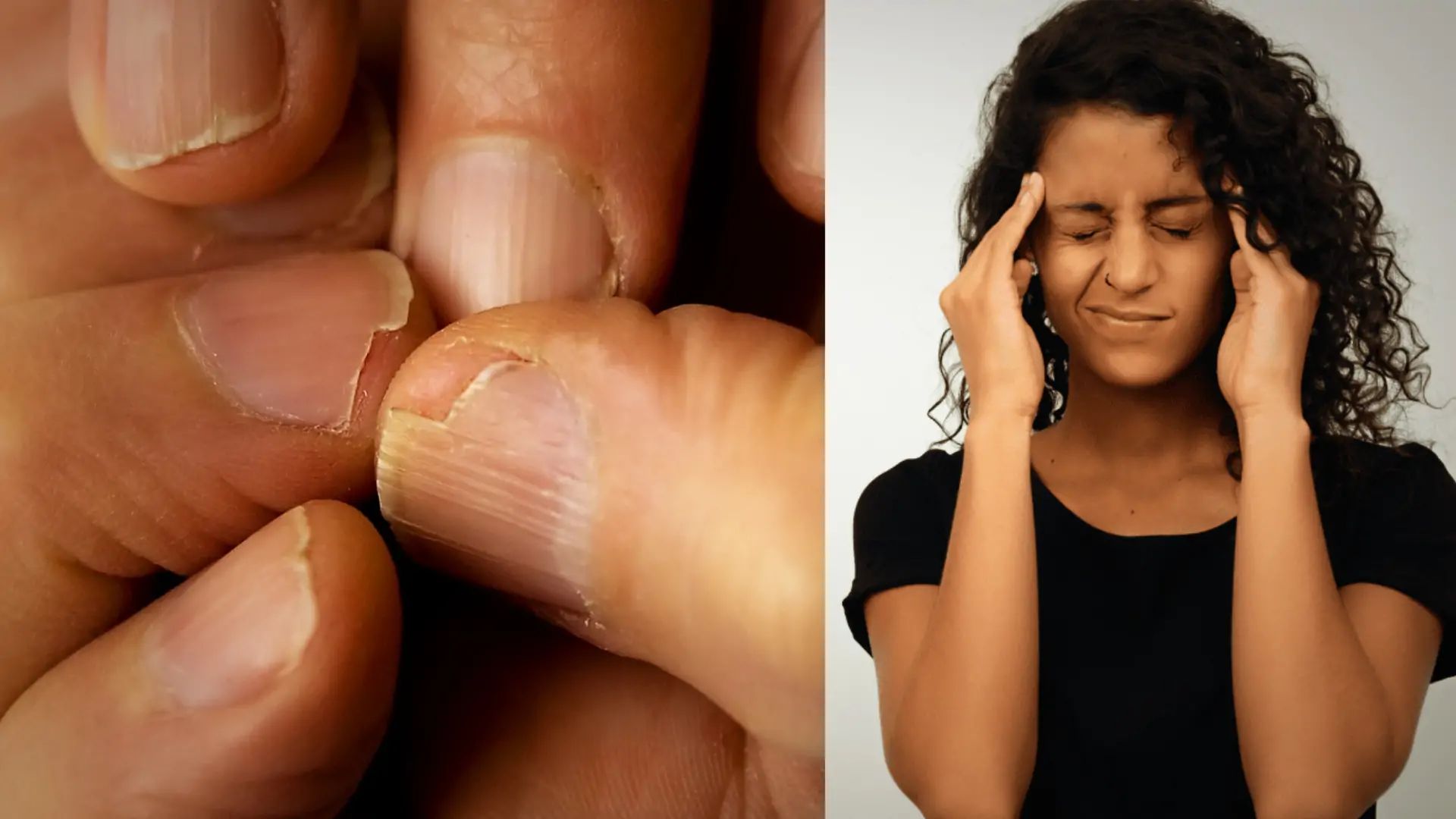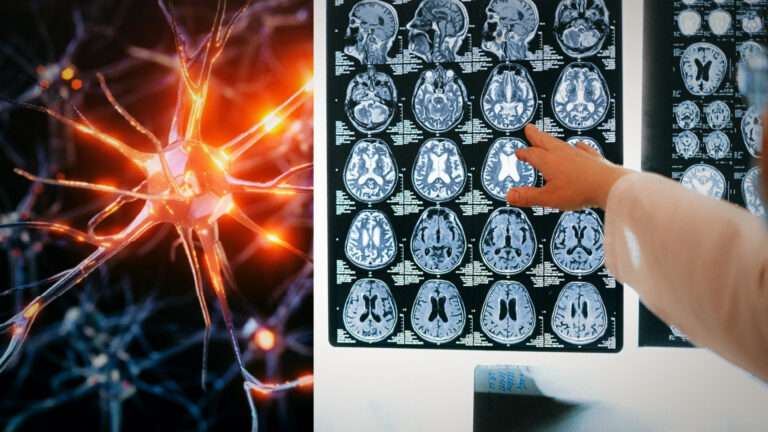5 Subtle Signs You May Have ADHD Without Even Realizing It: Understanding the Hidden Indicators

Attention Deficit Hyperactivity Disorder (ADHD) is widely known as a childhood condition, but what happens when it’s not diagnosed until adulthood? In fact, many adults who struggle with ADHD symptoms may not even realize they have it. According to estimates, the prevalence of ADHD in adults in the UK ranges between 3% and 4%. ADHD is often associated with children, but as awareness grows, many are discovering that they may have been living with the condition long after their school years.
While it is commonly understood that children with ADHD have trouble focusing, acting impulsively, and exhibiting hyperactive behaviour, many adults go undiagnosed for years, leading to a series of struggles and frustrations that could have been addressed much sooner.
In this article, we’ll explore five lesser-known signs of ADHD that could be affecting your daily life—signs that you may not have even realized were connected to this disorder. If you find that some of these symptoms resonate with you, it might be time to take a closer look at ADHD.
1. Constant Fidgeting or Restlessness
One of the most common signs of ADHD in both children and adults is an inability to sit still. You might find yourself tapping your foot absentmindedly, shaking your leg, or even twirling a pen without thinking. This seemingly harmless behaviour is actually a physical manifestation of the restlessness that often accompanies ADHD. Fidgeting can also include actions like repeatedly adjusting your seating position, shifting around in your chair, or playing with small objects during conversations or while working.

This restlessness isn’t always disruptive, but it can be exhausting. The inability to focus your energy in one place can impact your productivity at work, your social interactions, and even your ability to relax during downtime. If you recognize this pattern in yourself, it’s worth considering whether ADHD might be contributing to this constant feeling of unease.
Want to know more about the science behind fidgeting and ADHD? Click here for detailed insights into how ADHD affects motor skills and attention.
2. Hiding Your True Feelings Behind a ‘Bubbly’ Personality
While ADHD is commonly associated with difficulty focusing and impulsivity, there are emotional and social indicators that can be just as telling. One lesser-known sign of ADHD is what’s often referred to as “masking.” Masking involves consciously or unconsciously putting on a front to hide the real feelings you’re experiencing.
People with ADHD may go to great lengths to appear confident and put together, but on the inside, they may be battling anxiety, confusion, or frustration. It’s as though there is a constant internal conflict between how you feel and how you want others to perceive you. This dissonance can be exhausting, especially in social situations. You might find yourself engaging in conversation with a bubbly demeanor, all while feeling drained and anxious underneath.
Are you masking your ADHD symptoms? Learn more about how to identify and address masking behaviours in adults with ADHD.
3. Zoning Out Frequently, Even During Important Moments
Another key indicator of ADHD that often goes unnoticed in adults is frequent zoning out. This isn’t just daydreaming; it’s a deeper disconnect from your surroundings that can happen at the worst possible moments. You might find yourself mentally checked out during meetings, while driving, or in the middle of a conversation with loved ones. Your mind seems to wander off, and you’re unable to bring it back into focus.
This type of “mind drift” can be frustrating for both the individual experiencing it and those around them. It may be mistaken for laziness or a lack of interest, but it’s actually a symptom of ADHD’s impact on concentration and attention. It’s not that you don’t care—it’s that your brain is working overtime, juggling a million thoughts and struggles at once.

If you’re often caught zoning out during key moments, it may be helpful to understand how ADHD impacts focus. Click here to explore ADHD and its effects on concentration in more depth.
4. Struggling with Organization and Time Management
As anyone with ADHD will tell you, staying organized can feel like an impossible task. Whether it’s keeping track of appointments, managing tasks at work, or staying on top of household chores, disorganization is one of the hallmark symptoms of ADHD in adults.
People with ADHD often experience difficulty with time management. You may be chronically late, lose track of deadlines, or underestimate how much time it takes to complete a task. This isn’t because you’re lazy—it’s because your brain struggles to prioritize and organize information effectively. Time seems to slip away unnoticed, leaving you feeling overwhelmed and frustrated.
Want tips for improving time management and organization when you have ADHD? Check out these strategies that have been proven to help adults manage their tasks more effectively.
5. Feeling Perpetually Burnt Out
Many adults with ADHD report feeling emotionally and physically drained, even when they haven’t been particularly busy. This constant sense of burnout can stem from the mental effort required to manage symptoms like restlessness, impulsivity, and distractibility. Juggling the demands of daily life while struggling to maintain focus and organization takes a significant toll on energy levels.
Often, this burnout is compounded by anxiety and frustration. Adults with ADHD may feel like they’re constantly “on” but never fully able to achieve their goals or manage their responsibilities. The cycle of effort followed by exhaustion can lead to a sense of helplessness, which makes everything feel harder than it really is.
Burnout can have serious consequences on your mental health. Find out how to cope with ADHD burnout and improve your emotional well-being.
Social Media Insights: Real Stories and Conversations on ADHD
Social media platforms are an increasingly popular place for individuals to share their personal stories and experiences with ADHD. Here are a few standout posts that highlight the reality of living with ADHD:
1. TikTok Post: ADHD and Masking
Here’s a post from @ADHDLifeTips on TikTok:
“I’ve spent so many years masking my ADHD symptoms. On the outside, I look confident and put together, but inside I’m a mess of anxiety. If you’re struggling too, you’re not alone. ADHD is real, and it’s okay to ask for help. #ADHDSupport #ADHDMasking #MentalHealthAwareness”
2. Instagram Story: ADHD Burnou
Here’s a snippet from a post by @ADHDSupportGroup on Instagram:
“Burnout is real for those of us with ADHD. We push ourselves to the limit, trying to juggle everything, only to crash and feel like we can’t go on. Let’s talk about how to avoid burnout and find balance. #ADHDBurnout #ADHDSupport #MentalHealthMatters”
3. Twitter Thread: The Struggles of Time Management
Here’s a recent tweet thread by @ADHDFacts:
“Time management? More like time losing for those of us with ADHD. 😅 I constantly underestimate how long things will take, and it always leads to stress. Anyone else struggle with this? How do you stay on track? #ADHDTips #TimeManagementStruggles #ADHDSupport”
Join the discussion on Twitter.
4. Facebook Post: Coping with Distractions
Facebook groups dedicated to ADHD are often filled with supportive posts from individuals seeking advice or simply sharing their own experiences with managing distractions.
“If you’re constantly distracted, you’re not alone! Try breaking tasks into smaller steps, using timers to stay on track, and eliminating distractions one at a time. Here’s to finding peace in the chaos! #ADHDCoping #ADHDSupport #FocusTips”
See more posts in this ADHD group on Facebook.
5. Reddit Thread: ADHD and Relationships
Here’s a post from the r/ADHD community:
“Being in a relationship with ADHD means there’s a lot of misunderstandings. I forget things, get distracted mid-conversation, and sometimes miss important moments. Anyone else struggle with this? How do you manage your relationships while dealing with ADHD? #ADHDSupport #ADHDDating #ADHDRelationships”
Join the conversation on Reddit.
ADHD in Adults: What to Do If You Think You Have It
If any of the above signs resonate with you, it might be time to consider whether ADHD is the cause. While ADHD symptoms can overlap with other mental health conditions, the first step toward understanding whether you have ADHD is to speak with a healthcare professional.
ADHD can be difficult to diagnose in adults because many of the symptoms—like distractibility and impulsivity—can also be symptoms of stress, anxiety, or other disorders. However, it’s important to get a formal evaluation to rule out other conditions and confirm whether ADHD is at play.
Think you may have ADHD? Talk to your doctor about your symptoms and explore the available treatment options, including both therapy and medication.
The Road to Diagnosis and Treatment
ADHD treatment often includes a combination of medication and therapy. The NHS recommends this dual approach to help relieve symptoms and improve the quality of life for those with ADHD. Medication can help manage symptoms like impulsivity and inattention, while therapy (such as cognitive behavioural therapy) can help develop coping strategies for organization, time management, and emotional regulation.
While getting diagnosed as an adult may feel overwhelming, it’s important to remember that you are not alone. Many people live with undiagnosed ADHD for years, only to discover it later in life. With the right support, you can begin to manage your symptoms and live a fulfilling, balanced life.
Looking for ADHD support groups? Explore community resources that can provide a sense of understanding and shared experience.
Final Thoughts: Why Awareness and Early Diagnosis Matter
ADHD in adults is often underdiagnosed, and many adults live with the condition for years before seeking help. Understanding the subtle signs of ADHD is the first step toward finding a solution and improving your daily life. If you think you might be living with ADHD, reach out to a healthcare provider to explore the possibility of diagnosis and treatment.
Remember, ADHD is manageable, and you don’t have to face it alone. The first step is acknowledging the possibility and seeking the support you need.
Looking for more information on ADHD? Browse expert advice and research on the condition and treatment options.
Featured Image Credit: Getty Stock






